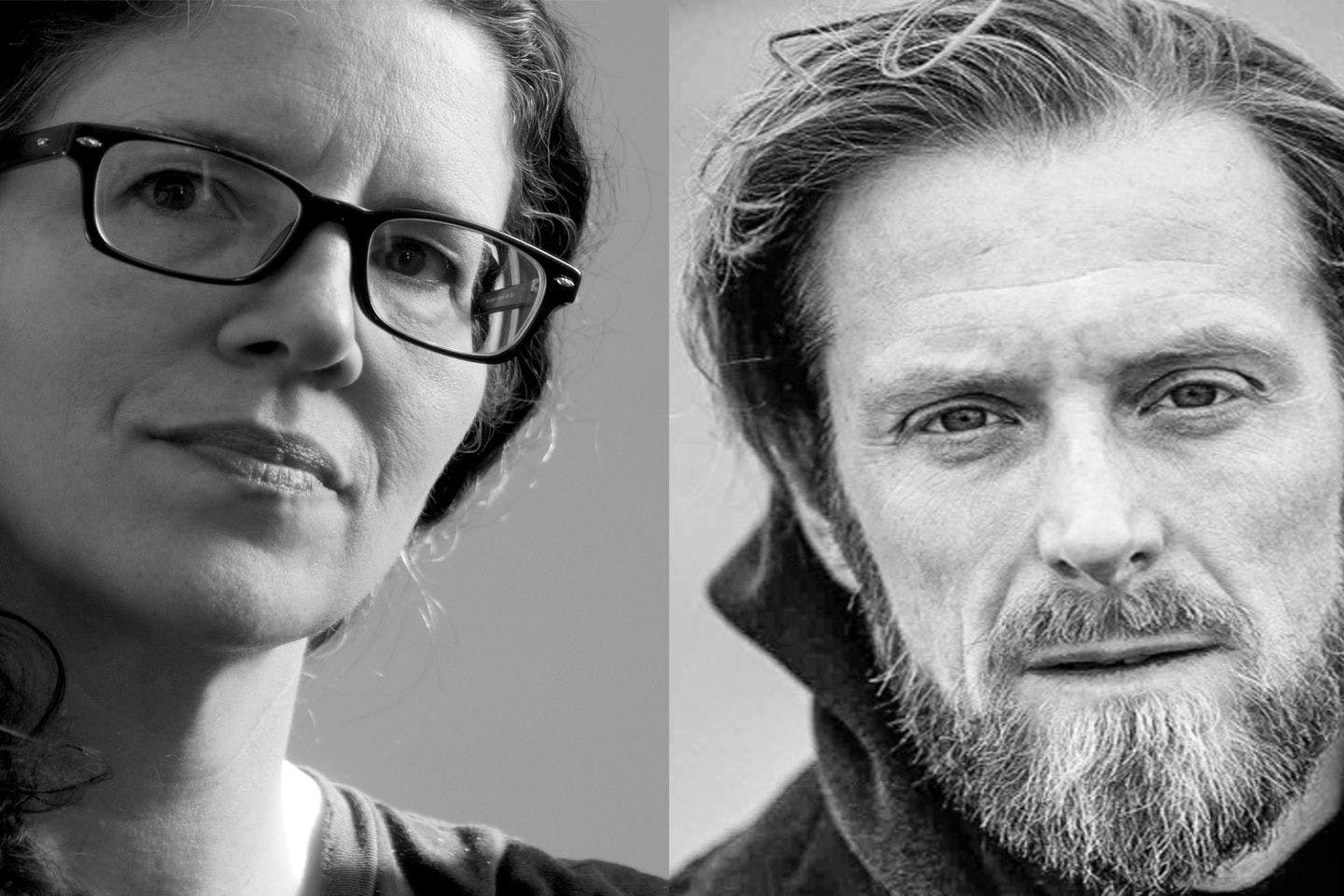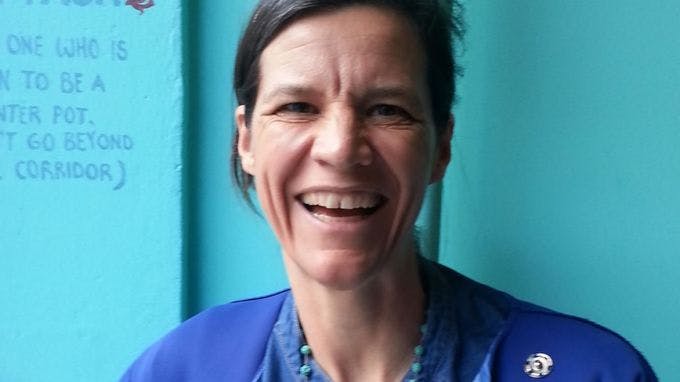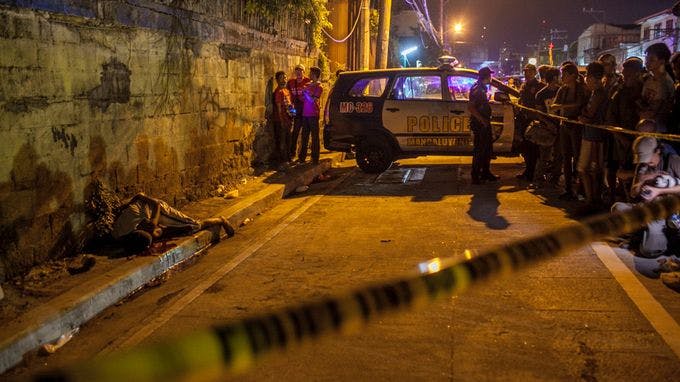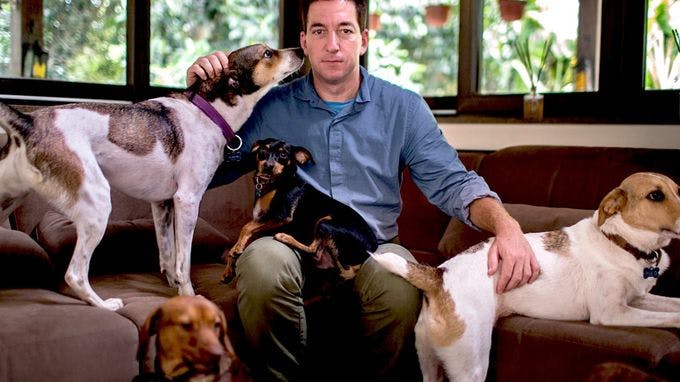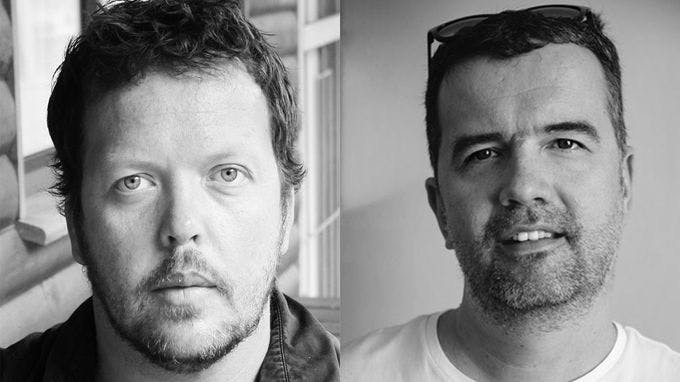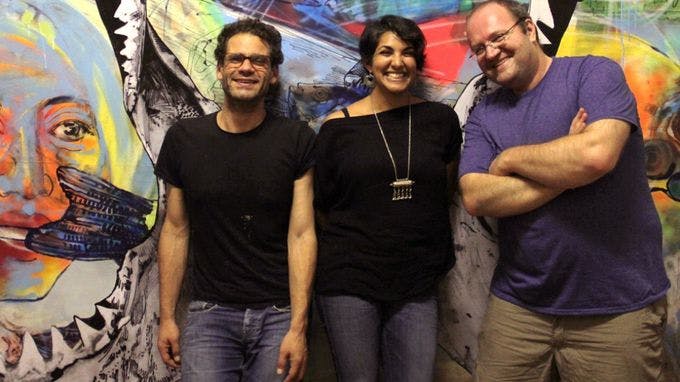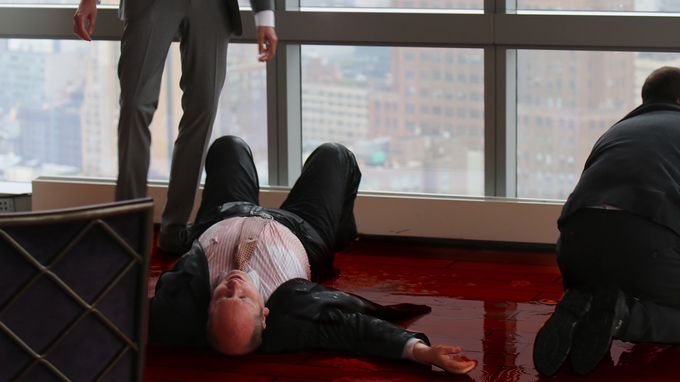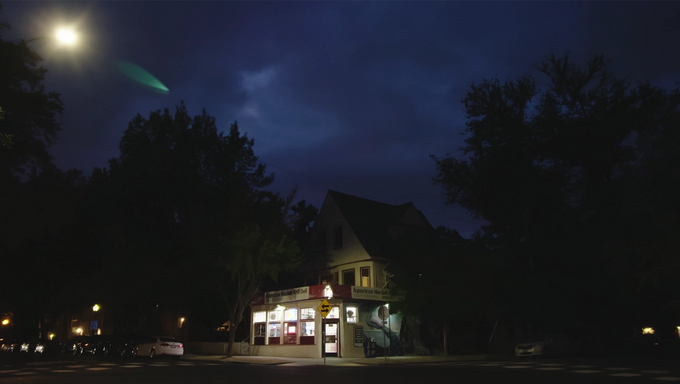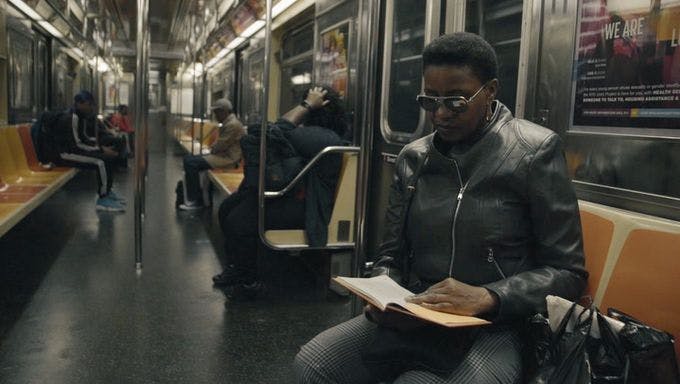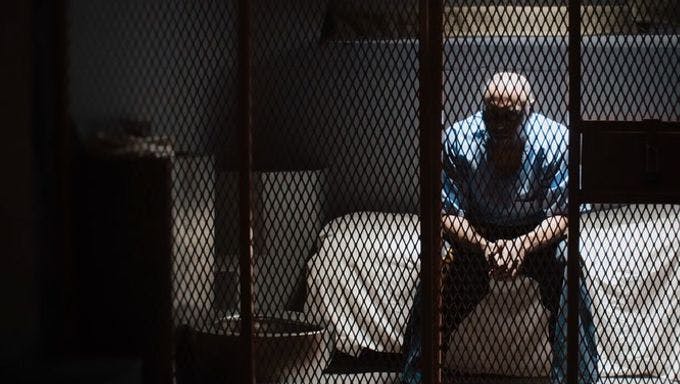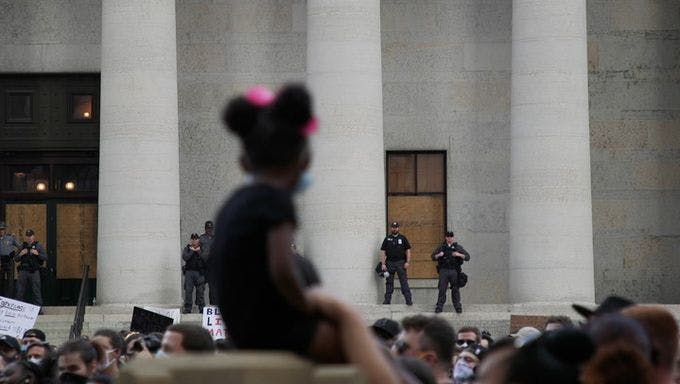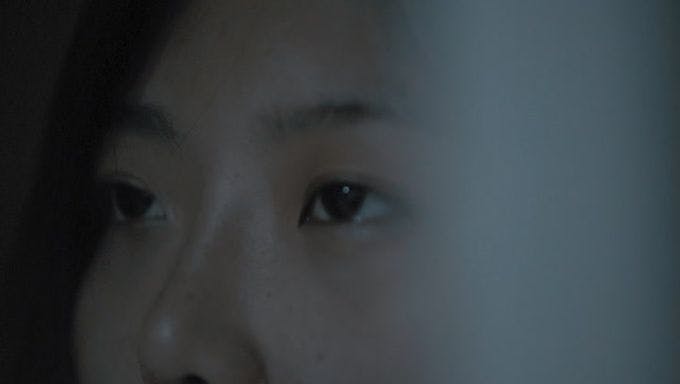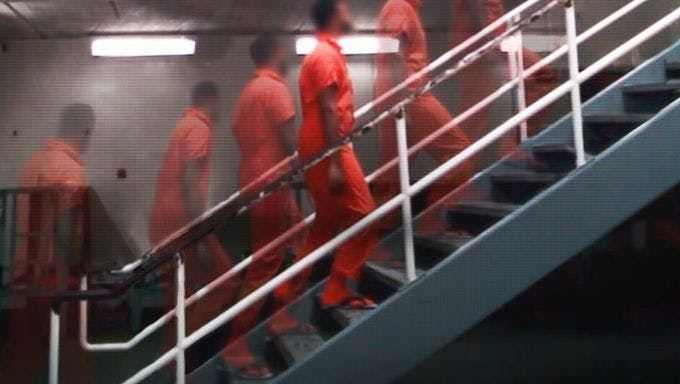Project X continues a collaboration between Poitras and Moltke that began with their reporting on documents released by NSA whistleblower Edward Snowden in 2013, and is part of a joint reporting project between Field of Vision and The Intercept. On November 16, 2016, The Intercept published Ryan Gallagher and Moltke’s complementary story entitled, “Titanpointe: The NSA’s Spy Hub in New York, Hidden in Plain Sight,” which reveals the location of NSA’s NYC surveillance hub, and delves into he history of the structure, the man who designed it, the late John Carl Warnecke, and the secret NSA program run out of the building, called “Titanpointe”.
Project X is a visual excavation of Warnecke’s monolithic, windowless telecommunications building owned and operated by AT&T at 33 Thomas Street overlaid with readings from secret NSA documents. The actual voices supplying that audio are, in order of appearance: Rami Malek, Emmy Award-winning star of the USA Network television show Mr. Robot, as well as films such as The Master and Short Term 12; and Michelle Williams, the three-time Academy Award-nominated star of films such as Manchester by the Sea, Brokeback Mountain, Blue Valentine, and My Week With Marilyn.
In this far-ranging conversation, Poitras and Moltke talk about the origins and nature of their collaboration, the process by which primary source texts become dramatically compelling cinema, working with actors to subtly characterize official documents, and the challenges of filming a building that somehow manages to be hidden in plain sight.
How did you find each other, and when did your collaboration begin?
Moltke: I was working on a radio documentary about the physicality of the Internet when Snowden came out. I tried to contact Laura, who was totally under siege at the time and starting to edit CITIZENFOUR. I didn’t hear back, so I travelled to Rio and convinced Glenn [Greenwald to work with me and a small team of Danish reporters from Information. I lived in Berlin, so Glenn introduced me to Laura. After reporting three stories involving Denmark - based on Snowden documents - Laura asked me to work with her directly.
Poitras: Both Henrik and I come out of other types of narrative work—narrative documentary and radio. The question was how to approach the [Snowden] archive visually, and with audio. How do you present things that aren’t just straight up news stories? How do you use primary documents to tell stories, and to make them come alive through the use of cinema and music. I think there’s a dialectic going on [in Project X] between the primary documents driving the visual choices and not just imposing a vision. I had been hungry to figure out a way to do that and this project gave us an opportunity.
Moltke: Between 32 Avenue of the Americas, which is the old AT&T headquarters, 60 Hudson Street, and 33 Thomas Street—those three building are really, really important for the internet. Most people don’t know this. That was something that had always fascinated me, the physicality of these [buildings]—and you can see all these markings on the streets, you can see these cables. So I started looking into it, and I started filming the building. One day we went down there and Laura decided to walk into the building, which I hadn’t done before. I’d never even thought about it. And in that moment I had an idea of what the movie would be. You’re in a place that’s totally normal, but there’s this other layer that’s totally secret and not there.
It’s clearly not inviting.
Moltke: Everything about the building tells you not to go in there. There’s just a guard, but you can’t get anywhere further, there’s a thick bulletproof sliding door. But somehow you don’t even think about it.
Poitras: All the kids in the neighborhood have myths about that building. It’s like a haunted house.
Moltke: The first night I filmed some guy came out from the building and said that I couldn’t film it because it’s a federal building. He then he started talking about 9/11 when I pointed out I was filming an AT&T building, not the Federal Building. It was really strange. I had a lot of experiences like that, people coming up and telling me random, sometimes striking details. One person working in the building told me he’d heard that Bush would have been taken to the building if he had been in NYC on 9/11, because it’s the safest place in the city.
Poitras: I had also been fascinated by the covert travel instructions since the first time I saw them. That there were guidelines for how people should travel as spies within the United States—they’re so fantastic as documents. The film allowed us to combine these two things—our interest in this building and these covert travel instructions.
It’s interesting to think about multiple stories with different forms and different expressions coming from a single archive like that. Here’s one source and all these different expressions. How do you identify what is going to be what? How do you sort through what makes sense as a written story, and what could be a film?
Moltke: For me, it’s a gut feeling. When I first found proof that identified AT&T as a partner, I had a clear idea [of the news story]. But also reading these documents you see images. In this instance the story worked both as an investigative news story and as a short film.
When did you know you had enough evidence to make the connections?
Poitras: It was the satellites on the roof.
Moltke: We contacted the FCC who confirmed that 33 Thomas Street was the only AT&T location in all of New York State that had a licensed satellite earth station. We knew the location was in New York and we knew they had a program that relied on satellite uplink, and we knew the partner was AT&T. That made it pretty clear. But from there to be able to go and convince an editor, that’s another long stretch.
Poitras: The way the archive appears, they use codenames for things that are the most sensitive. And one of the things that is most sensitive for the NSA are those partnerships with the telecoms—AT&T, Verizon. There are always codenames [for those].
Moltke: The whole design is made for you to not be able to figure out what it is.
In a way it’s really valuable to have to contend with the roadblocks. It allows us to understand how these systems, how the lack of transparency works.
Poitras: This is actually what Henrik has been doing for the past three years.
Moltke: And it drives you crazy. It’s fun but also…you go down these super long paths, and you just have to give up after a few weeks.
Does the path itself become valuable?
Moltke: Sometimes.
Poitras: I would say there was a parallel process in terms of both the work on this film and the work we did for the Whitney show in terms of just getting the facts right. In determining the public interest of information, and having a simultaneous publication of things that fit into the narrative of a film, or in an art sense, and of more hard news. That’s been one of the great things about collaborating with Henrik—he’s been able to straddle those things.
Moltke: I spent so much time in that archive that to go out and see the locations is such a surreal experience. I went down to look at the NSAs building in the National Business Parkway in Maryland. It’s such a strange place—it’s an actual business park. That’s where all the post 9/11 stuff, all the contractors moved in and for some reason you can actually film there
In his film you’ve got audio sources that don’t directly match the imagery, which goes from the evocative driving motif to vantages on and around 33 Thomas. Did you gather a lot of footage and pare it away in the editing room, or were you looking for specific visuals to shoot?
Moltke: Originally I went out and tried something, and showed it to Laura. And then we went and shot it with Jarred Alterman, who was a great DP to work with. Laura had a clear idea before we went on that trip of which kind of shots she wanted and how it would work with the audio.
Poitras: At some point we discovered all this backstory about the building and its amazing architect John Carl Warnecke, this fascinating Cold War character who not only designed this building but also a host of other government buildings. With Nels Bangerter, the editor, we started to map out how to approach the reveal of this building, and decided to use the road trip to get us there. We really needed to work with an editor who would be able to approach something conceptually, but also with a narrative heart to it.
Henrik, there’s a quote in your story about how the building kind of blends in with the city. And it’s really true—it inexplicably, creepily can disappear from view. And in the film you really convey that, especially with the night photography. You visualize it without having to say it.
Poitras: One of my favorite shots was one that Henrik took of the cityscape all lit up with this black monolith that’s all dark. We wanted to reveal the building at different stages: With more detail on the ground and then get it at elevation to see how it exists within and among buildings. It jumps out at you in a very different way than when you’re on the ground.
In your recent work, Laura, you’ve really been able to mine drama from landscape—I’m thinking especially about The Oath. But there you had characters. Was there a limit here to how far you could push things, narratively, without central characters?
Poitras: I do think that there are characters, actually. I think the narration in Project X function as characters in a very real sense.
They’re obviously providing an informational function—reading aloud from these documents. But how do you see them as characters?
Poitras: They’re voices of authority giving instruction, narrating the hidden world. They’re in a way hidden from us as people, but they are among us. There are people who go to work and are given these instructions. They’re on the subway sitting right next to you but they’re told what to tell their families, what to do and say—these characters kind of being the NSA.
Yet they’re talking to us.
Poitras: We wanted a sense of communication. It’s not a monologue. It’s a communication being directed at agents.
Moltke: There aren’t many documents that are like this. You definitely can sense from the documents that they’re trying to prevent blowing their cover. You would almost expect that you wouldn’t need to read these kinds of things if you were really good at cloak and dagger stuff, but the NSA is a different kind of organization, they’re not so used to working domestically and under cover.
There’s almost a soft quality to his text that lends itself to being a conversation. It’s practical information for a client, not orders from a superior. It’s interesting when something written gets read aloud in that way. It automatically makes it more human since there’s interpretation in the expression, even if only mildly. When people write documents like that, they’re not writing for vocalization.
Poitras: There’s the male voice, Rami Malek, which has this kind of whispering in your ear quality. And then there’s a more authoritarian female voice, which is Michelle Williams, that’s more dictating, a more distant voice.
How did you come to work with Rami and Michelle?
Poitras: Henrik and I are both big Mr. Robot fans. I had asked Sam Esmail to be an Executive Producer on my film Risk, which is about WikiLeaks and Julian Assange. Then, right before we sent the e-mail invitation to Rami, we saw the last episode of Mr. Robot, which freaked us both out because the cliffhanger was all based around 33 Thomas Street. It’s actually crazy.
What was it like directing Rami? [At the time of this interview, Michelle Williams hadn’t recorded her part.]
Moltke: I was very impressed with his skills. He’s so good at nailing details. With documentaries you’re used to getting one chance and then you have to work with what you have, so this was obviously an amazing experience.
Poitras: The way he read lines, he brought this really human touch.
Were there different takes on how to do that voice?
Poitras: Yeah, we did a range of, “how official or how distant or how whispering in your ear should it be?” It’s not just somebody speaking to himself, but communicating to an agent who’s making this drive.
Why the two voices, instead of just Rami?
Poitras: We had different primary documents, and we wanted them to be different characters. So we had the male voice reading the travel guide for the road trip, and then the other being the official voice. They’re both coming from within the NSA, but they have different qualities. At one point we thought about having a third voice, since we’re pulling from three different sets of documents, but we ultimately settled on two.
And were Rami’s repeated readings of the word “redacted” incorporated into the text?
Poitras: It was put in later.
Moltke: I changed the names of everything that needed to be redacted. It was a difficult choice: how do you represent text redaction in audio?
Poitras: We tried doing a beep, tried reverse audio.
Moltke: Scrambling.
Poitras: I wasn’t convinced it was going to work until I heard Rami speak it. Once he said it, I knew it was really good. It added a level of humor. It was a great thing to be wrong about.
Was it just the one usage used over and over again?
Poitras: No, he read it a bunch of times. And we used different versions.
Moltke: I’m a total redaction nerd. Working with the documents can be very boring and repetitive and Kafkaesque at times. When we’re able to come up with something that is so condensed and aesthetically pleasing it makes me happier to do the less inspiring work, which still needs to be done, and without errors.
Poitras: One of the great things about working with Henrik is that, of course these documents are newsworthy, but there’s a limit to how far you can go with that. How can you go into a different space which is—what does it feel like, what does it do to you to be a spy? What does it feel like when you can’t talk to people about what you do? How do you live with that? It’s a crazy, schizophrenic way to live. That’s not news—that’s a human question. And that’s the stuff I’m drawn to.
